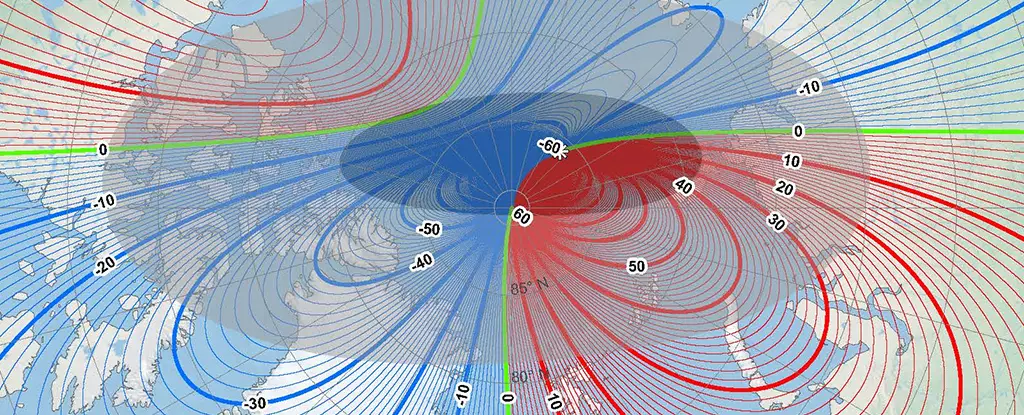For mariners, aviators, and modern-day navigators, reliable positioning is indispensable. The magnetic North Pole, which differs from the geographical North Pole, serves as a crucial point for accurate navigation. Whereas the geographical pole stays static at the Earth’s rotational axis, the magnetic North Pole is in a constant state of flux. This shift is significant enough to warrant regular updates to navigation systems used globally, ranging from commercial ships to personal GPS devices. The recent collaboration between the U.S. National Oceanic and Atmospheric Administration (NOAA) and the British Geological Survey (BGS) reflects the necessity of adapting to this shifting magnetic reality.
The Shifting Paradigm
Each year, the magnetic North Pole continues its migration, moving from its historical location in Canada towards Siberia. Such a significant shift has prompted scientists to investigate the reasons behind this unusual motion. Research indicates that two large magnetic lobes—one located beneath Canada and the other under Siberia—are the driving forces of this migration. The speed at which magnetic north travels has accelerated rapidly over the past two decades, at times moving from 50 kilometers per year to a dramatic slowing of 35 kilometers over the past five years. This irregularity in motion poses a unique challenge to navigational accuracy, leading to potential consequences for both industry and individual users.
In light of these discoveries, the NOAA and BGS have developed an updated World Magnetic Model (WMM) that offers a more precise understanding of magnetic north’s location. This latest model arrives with a significant enhancement in spatial resolution, boasting over ten times the detail of its predecessor. This leap in precision is essential for ongoing navigation efficacy over the next five years. For example, a journey from South Africa to the UK that once could have placed you 150 kilometers off course using outdated data now boasts a far more reliable trajectory.
The implications of these advancements stretch beyond traditional navigation systems. Global mapping and logistics companies, as well as government and regulatory bodies, recognize the importance of adopting this new model to maintain operational accuracy. Automated updates to smartphones and satellite navigation systems further this cause, ensuring that users do not have to manually adjust their devices—a significant convenience in today’s fast-paced world.
Remarkably, the magnetic North Pole was first documented by Sir James Clark Ross in 1831 in Canada, and since then, researchers have utilized various methods—ground measurements and satellite data—to enhance our understanding of its movement. As we embrace new technologies and facilities, our navigational guides become ever more precise. Yet, this degree of accuracy is critical, especially in a world where globalization demands precise location data.
As humanity becomes increasingly reliant on GPS technology, the movement of the magnetic North Pole introduces both challenges and opportunities. Each update to the World Magnetic Model represents not just a necessity but a testament to the interplay between our natural world and technological advancements. The necessity for continuous recalibration emphasizes the importance of ongoing research in geomagnetism and navigation science.
As our reliance on technology grows, so does the complexity of our navigation systems. With improved navigational tools and the integration of real-time updates, the anticipation of magnetic shifts becomes manageable. However, complacency can lead to navigational errors that have global repercussions. It’s vital to remain vigilant, staying informed about changes in magnetic data as well as understanding their implications for all modern navigation methods.
As the magnetic North Pole continues to reshape our world, the collaborative efforts to track these changes highlight not just our need for accuracy but also our adaptability in the face of a continuously evolving planet. Navigators must embody this adaptability, ensuring that they are equipped with the latest information to traverse the globe efficiently and accurately. To sail or fly without this updated information would be akin to steering a course through uncharted waters—a risk too great to take in today’s intricately connected environment.


Leave a Reply